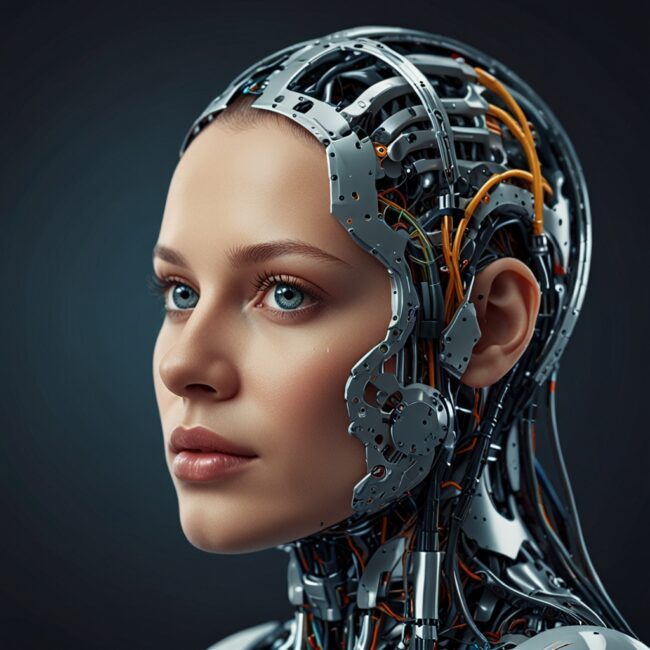Chatbots and conversational AI have rapidly evolved from marketing gimmicks to essential tools in various industries. They can be found on websites, in apps, and even embedded in customer service systems. Understanding their significance and potential can reshape how we interact with technology. This article delves into what chatbots and conversational AI are, their history, how they work, and their implications for the future.
What Are Chatbots and Conversational AI?
At their core, chatbots are software programs designed to simulate conversation with human users. They can handle basic queries, provide information, and even complete tasks through text or voice interactions.
Conversational AI, on the other hand, encompasses the broader technology that enables these chatbots to understand, process, and respond to user queries intelligently. It involves natural language processing (NLP), machine learning, and sometimes, emotional intelligence to create more human-like interactions.
The Evolution of Chatbots
The origin of chatbots can be traced back to the 1960s. The earliest example, ELIZA, created by Joseph Weizenbaum, imitated a psychotherapist in conversations. While it was rudimentary, it set the foundation for future developments in this field.
Fast forward to the 1990s, when A.L.I.C.E, designed by Richard Wallace, utilized a more advanced rule-based approach to chat functionalities. However, it wasn’t until the advent of machine learning and big data in the recent decade that chatbots began to flourish.
How Do They Work?
Chatbots work through several components:
- Natural Language Processing: This enables the chatbot to understand user inputs, breaking down sentences into manageable parts. The chatbot interprets intents and extracts relevant information from user queries.
- Machine Learning: Chatbots learn from each interaction. The more they chat, the better they understand user preferences and behaviors, enabling them to provide personalized responses over time.
- Dialog Management: This component determines how a conversation progresses. It helps chatbots maintain context and manage follow-up questions, making interactions feel smoother and more natural.
- Response Generation: Once the intent is recognized and context is understood, the chatbot formulates a response. This can be predefined or generated dynamically using algorithms.
Applications in Various Industries
Chatbots and conversational AI have found a home in numerous sectors:
- Customer Service: Many businesses use chatbots to handle inquiries 24/7, reducing wait times and improving customer satisfaction.
- E-commerce: Chatbots can guide users through purchasing processes, answer product questions, and provide personalized recommendations based on browsing behavior.
- Healthcare: Some chatbots triage symptoms, schedule appointments, and provide general health information, thus easing the load on medical staff.
- Finance: From banks to investment platforms, chatbots assist customers with account inquiries, transaction history, and financial advice.
The Benefits of Chatbots
Incorporating chatbots into a business model offers numerous advantages:
- Efficiency: They can handle multiple requests simultaneously, ensuring faster response times for users.
- Cost-Effectiveness: By automating routine inquiries, businesses can reduce staffing costs and allocate resources more effectively.
- Availability: Chatbots can operate around the clock, providing support outside of normal business hours.
- Data Collection: They gather valuable data on customer interactions, preferences, and behaviors, aiding in better decision-making.
Challenges and Limitations
Despite their benefits, chatbots also face challenges:
- Understanding Context: While improving, chatbots may still struggle with nuances and sarcasm in user communication.
- Limited Scope: Many chatbots work best within predefined scripts. Complex queries can lead to frustration if the chatbot cannot adapt.
- Privacy Concerns: Handling personal information raises issues around data security and user trust.
The Future of Chatbots and Conversational AI
The trajectory for chatbots and conversational AI is promising:
- Improved NLP: Advances in language models, such as GPT and BERT, are making chatbots more adept at understanding complex queries.
- Greater Personalization: Future chatbots will utilize vast amounts of data to provide tailored experiences for users, leading to deeper engagement.
- Integration with Other Technologies: The synergy between chatbots, IoT devices, and augmented reality will create more immersive user experiences.
Conclusion
Chatbots and conversational AI are no longer just novelties. They are transforming interactions across industries, offering efficiency, availability, and personalization. Their evolution brings hope for a future where technology understands us better, leading to smoother, more meaningful conversations. Understanding these tools will be essential as we move forward into an increasingly automated world.

